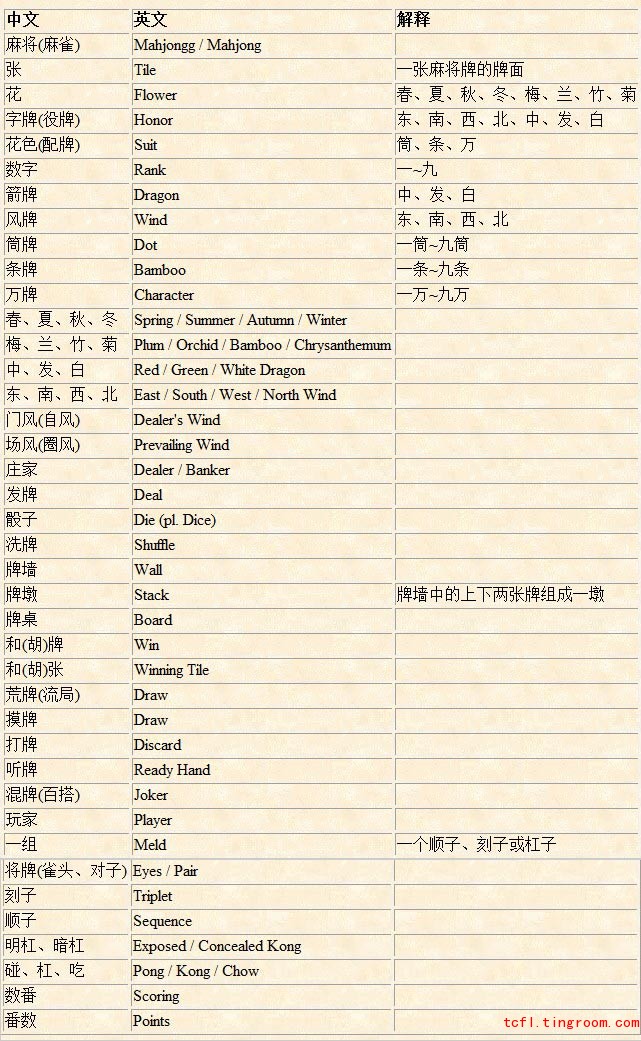Mahjong(麻将), also spelled majiang, mah jongg, and numerous other variants, is a game that originated in China. It is commonly played by four players (with some three-player variations found in South Korea and Japan). The game and its regional variants are widely played throughout Eastern and South Eastern Asia and have a small following in Western countries. Similar to the Western card game rummy, mahjong is a game of skill, strategy, and calculation and involves a degree of chance.
As it is played with tiles, mahjong is also jokingly called a game to "move" or "lay" bricks in China. Legend has it that mahjong was invented by an ancient Chinese strategist who used tiles to mock battle formations. A full set of mahjong commonly contains 136 tiles, including 36 sticks (or bamboos, numbered 1 to 9,4 of each number), 36 dots (or circles, numbered 1 to 9,4 of each number),12 dragons (4 red,4 green,4 white dragons), and 16 winds (4 east,4 south, 4 west, 4 north winds). These do not include eight flowers, which are added in the midst of a mahjong game.
Among the tiles, a stick represents the spear, a dot the shield, and a crack a troop. The east, west, south and north winds represent the guardian generals of the four doors. The character "zhong" denotes the commander, and the "fa" represents the officer that delivers the commander's orders. Blank tiles represent reserved forces.
The game is usually played by four individuals each holding 13 tiles. The object of the play is to obtain sets of tiles, and the winner is the first player to hole four sets and a pair of like tiles. In old days, the mahjong was played for gambling; today it is still a fad around the country.
Bilingual Majong Terms

 English
English Japanese
Japanese Korean
Korean French
French German
German Spanish
Spanish Italian
Italian Arab
Arab Portuguese
Portuguese Vietnamese
Vietnamese Russian
Russian Finnish
Finnish Thai
Thai dk
dk